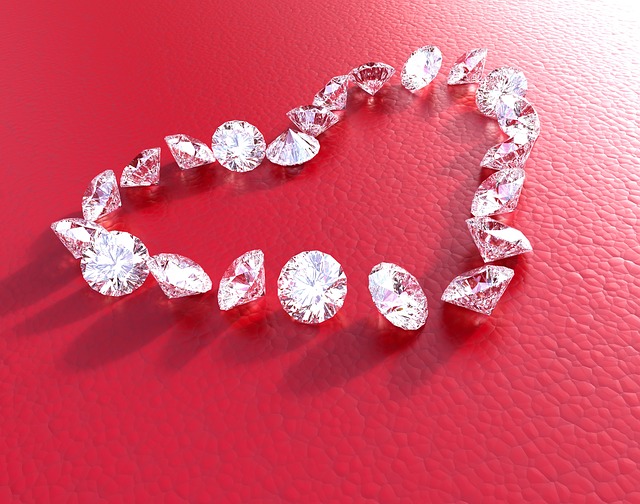No products in the cart.
How Are Colored Or Fancy Diamonds Graded?

To a poetic mind, diamonds can be described as light incarnate. Each stone burns with a white radiance that contains hints and sparks multi colored flame. It’s when diamonds shine that it becomes easy to understand the intense fascination people have for them. (Image Credit: Silvestre Cajigan/Pixabay)
Some of the rarest come in nearly every hue of the rainbow, which are called “fancy diamonds.” There are fancy diamonds that shimmer with the azure of deep oceans, some that shine with the gold of honey, and fancy diamonds that glow red as blood.
In the face of such opulence, how do experts decide which fancy diamond is worth more than another? Among fancy diamonds, color is the key factor.
Colored Diamonds
There are many factors gemologists consider when grading the worth of fancy diamonds. A basic factor is if the diamond is natural or not. Technology has allowed companies to make synthetic diamonds through various high-tech processes. These stones can even faithfully replicate the intense colors of natural diamonds. But lab-grown diamond rings tend to cost less than their natural counterparts.
After authenticity, the quality of the color a certain fancy diamond has is the next most important criteria. Ever since diamonds were first discovered by early Indian civilizations people have graded the value of the gemstones based on their color. In ancient times, the color of a diamond dictated which societal caste could possess such a gem. Kings, however, can own any diamond they like, regardless of color.
Modern Considerations
Today, gemologists judge a diamond’s color based on three criteria: hue, tone, and saturation. Hue refers to the presence of color in a diamond. The rarest and most expensive hue is red followed in descending value by green, blue, pink, and yellow. Tone is how light or dark the color of the diamond is. Saturation described how intense the color of the diamond is. This, among all three, is the most critical criteria. The more intense the color of the diamond, the more expensive it is.
After a gemologist has tested all three of the color criteria, they give the gemstone its color grade. The grades are, from least expensive (faint) to most expensive (fancy dark, deep, and vivid).
Faint diamonds only have a slight tinge of color while fancy vivids are diamonds with colors of the rarest and most intense color. Although the color is an important factor, other considerations can affect the final price of a diamond. The weight and size of the stone, the clarity of the color, and the cut of the stone are nearly as important as its color.
The ancient Greeks called diamonds “unconquerable.” This was because it was the hardest substance known to humanity. But perhaps, to a poetic mind, they could have been referring to the unmatched beauty of diamonds.
















Leave a Reply